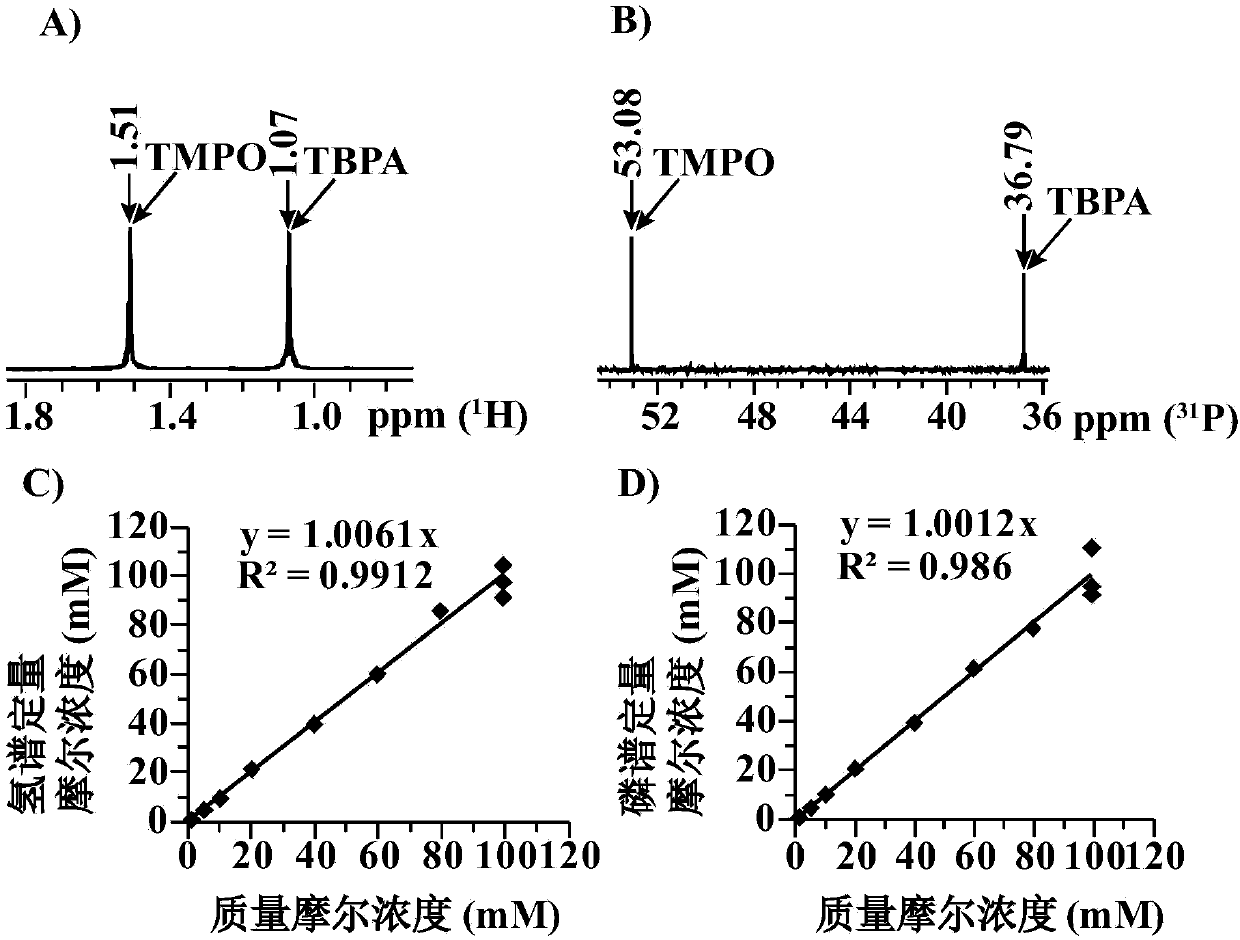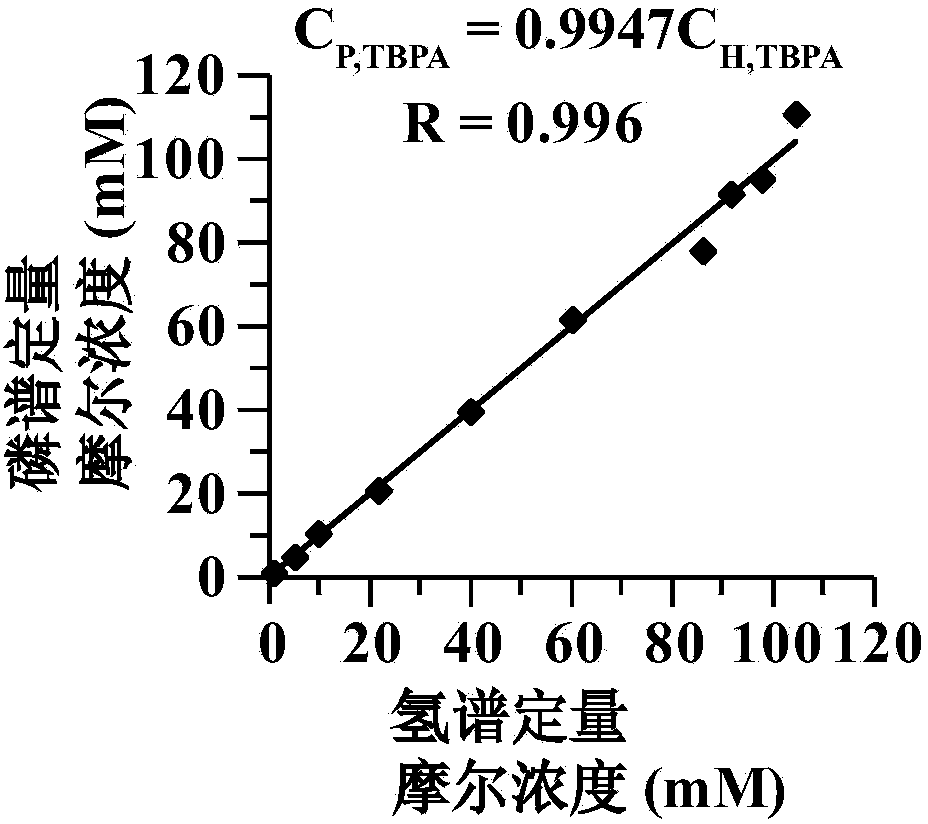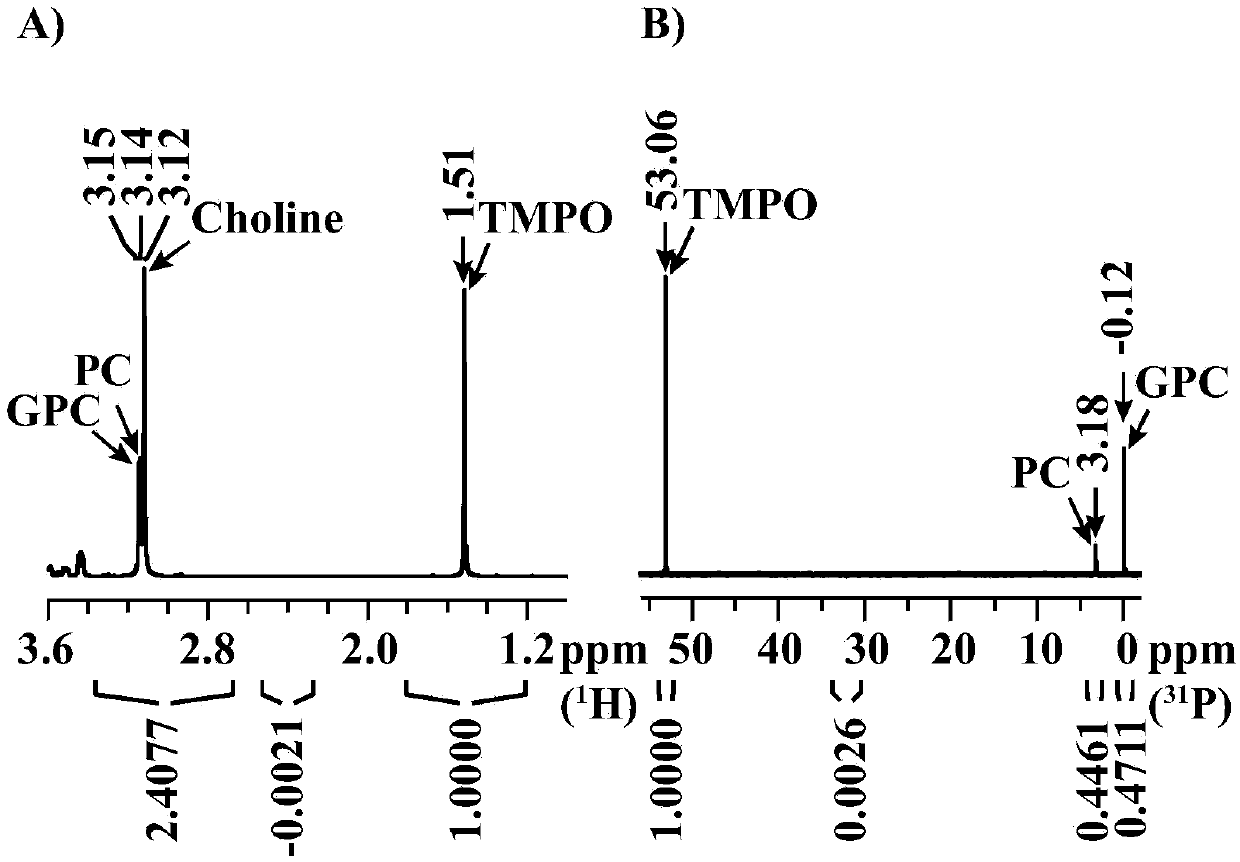Quantitative method of one-dimensional nuclear magnetic resonance mixture jointly utilizing different nucleuses
A nuclear magnetic resonance and mixture technology, applied in the field of analytical chemistry, can solve problems affecting the accurate quantification of a single compound, and achieve the effect of simple sample preparation
- Summary
- Abstract
- Description
- Claims
- Application Information
AI Technical Summary
Problems solved by technology
Method used
Image
Examples
Embodiment 1
[0042] Concentration determination and consistency comparison of tert-butyl phosphate in a model mixture of trimethylphosphine oxide and tert-butyl phosphate:
[0043] In order to verify the feasibility of using one-dimensional proton nuclear magnetic resonance spectrum and phosphorus spectrum as a quantitative analysis method, the present invention uses a series of trimethylphosphine oxide ((CH 3 ) 3 P(O), TMPO) and tert-butyl phosphate ((CH 3 ) 3 CP(O)(OH) 2 The model mixture of TBPA) was used as the research object, and the consistency of the quantitative results obtained by using one-dimensional H-NMR spectrum and phosphorus spectrum were first verified.
[0044] Reagents used and sample preparation: Trimethylphosphine oxide and tert-butyl phosphoric acid with a purity of 98% were purchased from Adamas-beta (Basel, Switzerland) and Across (New Jersey, USA), respectively. 99.9% heavy water (D 2 O) was purchased from CIL (Cambridge Isotope Laboratories; Massachusetts, U...
Embodiment 2
[0050] Determination of the absolute concentration of each component compound in the model mixture of choline, phosphorylcholine and glycerophosphorylcholine:
[0051] In order to further verify the feasibility of using nuclear magnetic resonance one-dimensional hydrogen spectrum and phosphorus spectrum for quantitative analysis, the present invention selects the mixture of choline, phosphorylcholine and glycerophosphorylcholine as a research example, and uses trimethylphosphine oxide as the hydrogen spectrum It is a universal quantitative internal standard for phosphate spectra, and accurately determines the absolute concentration and relative concentration ratio of each component compound.
[0052] Reagents used and sample preparation: choline chloride with a purity of 99%, phosphorylcholine chloride calcium salt tetrahydrate with a purity of 98% and phosphorylcholine glycerol were purchased from Adamas-beta (Basel, Switzerland). Weigh 74.9 mg of choline chloride, 54.8 mg of...
Embodiment 3
[0071] Determination of the relative concentration ratios of the individual component compounds in a model mixture and the extension of the NMR quantification method using different nuclei in combination:
[0072] In some cases, the relative concentration ratio of several compounds in the mixture has certain biological or physiological or pathological medical significance. For example, choline, phosphorylcholine, and glycerophosphorylcholine are considered to be the most important metabolites in human tumor tissues and cells. In vitro studies of tissue extracts have shown that these phosphoric acid derivatives can indicate the condition of certain diseases. Studies have shown that the relative ratio and concentration of these metabolites are related to the development of cancer, such as breast cancer. However, in the one-dimensional hydrogen spectrum, their NMR signals overlap with each other, so it is difficult to accurately determine the concentration or relative proportion ...
PUM
 Login to View More
Login to View More Abstract
Description
Claims
Application Information
 Login to View More
Login to View More - R&D
- Intellectual Property
- Life Sciences
- Materials
- Tech Scout
- Unparalleled Data Quality
- Higher Quality Content
- 60% Fewer Hallucinations
Browse by: Latest US Patents, China's latest patents, Technical Efficacy Thesaurus, Application Domain, Technology Topic, Popular Technical Reports.
© 2025 PatSnap. All rights reserved.Legal|Privacy policy|Modern Slavery Act Transparency Statement|Sitemap|About US| Contact US: help@patsnap.com



